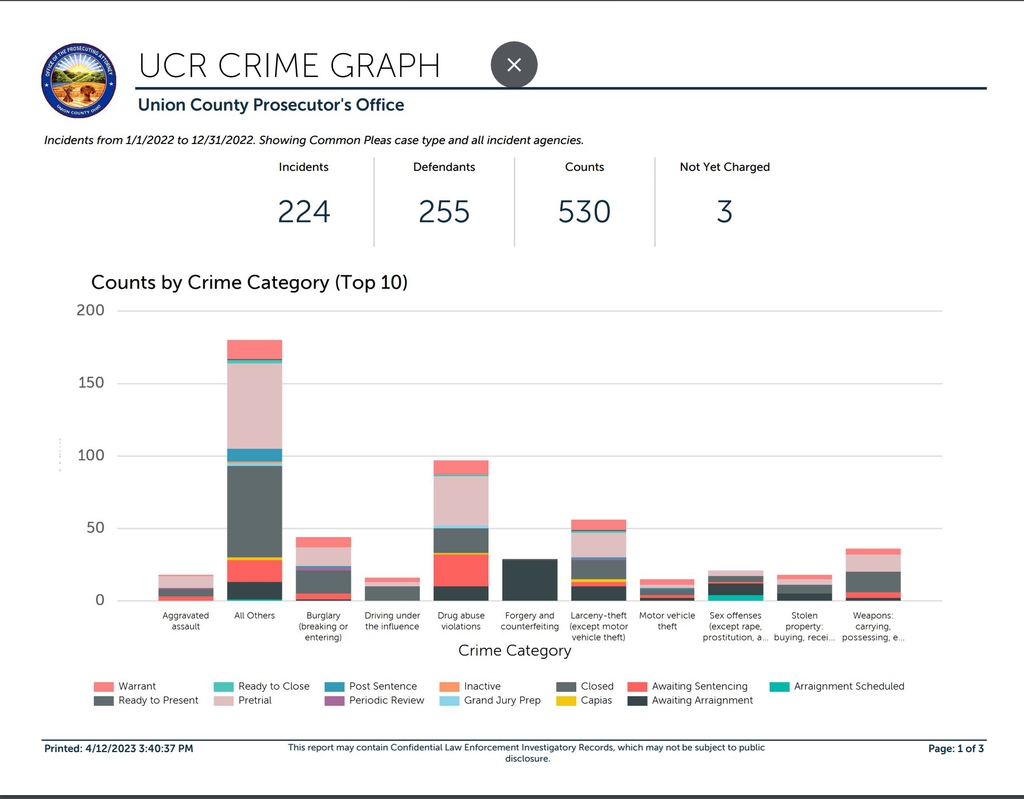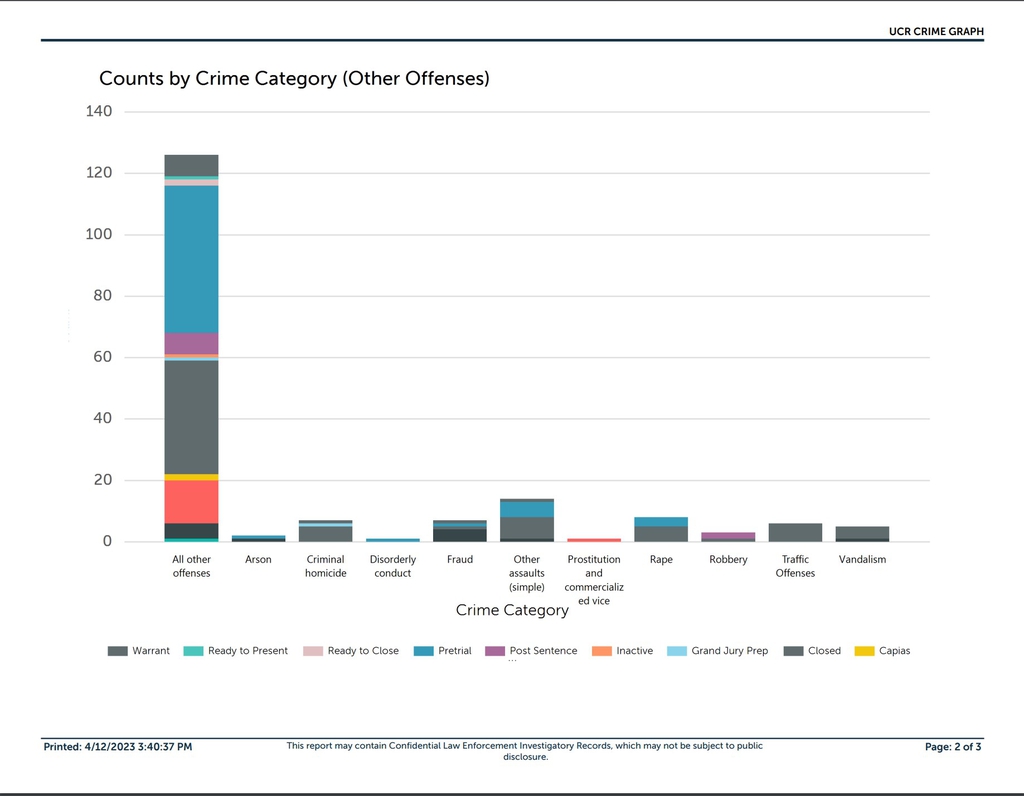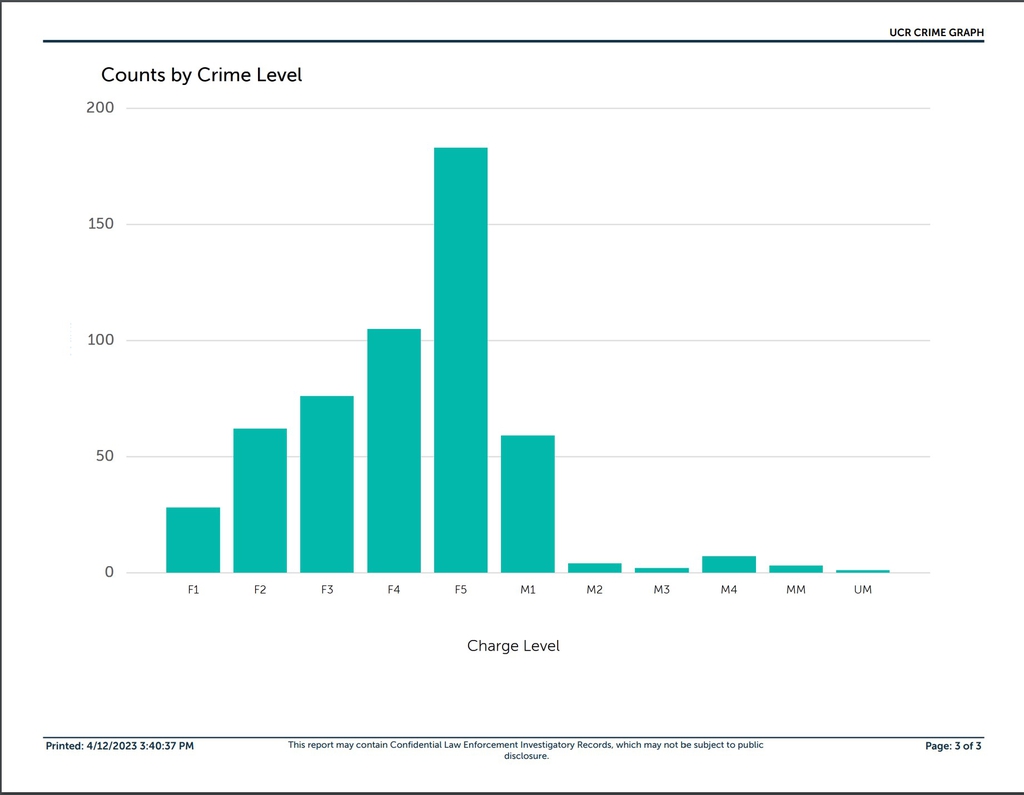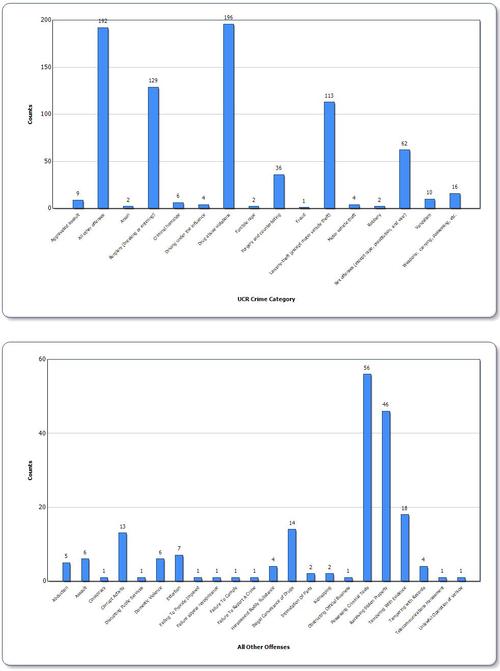Criminal Matters

What is UCR? The Uniform Crime Reporting (UCR) Program generates reliable statistics for use in law enforcement. It also provides information for students of criminal justice, researchers, the media, and the public. The program has been providing crime statistics since 1930. To view National UCR releases, go to the FBI's UCR webpage here.



For most people, familiarity with the criminal justice system comes from movies, television, and books. But when we become personally involved in the criminal law system, real-life issues come into focus and the need for information and assistance can arise quickly.
The Source of Criminal Law
When the Ohio Legislature decides that certain conduct is dangerous to citizens, or damaging to the society as a whole, such conduct is labeled a "crime" and is made punishable by sanctions such as fines and imprisonment. Criminal statutes describe the type of conduct that has been deemed a crime, the mindset or intent required, and in some instances, the punishment to be imposed.
For example, the following "Robbery" statute is found in Section 2911.02 of the Ohio Revised Code:
(A) No person, in attempting or committing a theft offense or in fleeing immediately after the attempt or offense, shall do any of the following:
(1) Have a deadly weapon on or about the offender's person or under the offender's control;
(2) Inflict, attempt to inflict, or threaten to inflict physical harm on another;
(3) Use or threaten the immediate use of force against another.
(B) Whoever violates this section is guilty of robbery. A violation of division (A)(1) or (2) of this section is a felony of the second degree. A violation of division (A)(3) of this section is a felony of the third degree.
The Criminal Law System: Players and Procedure
The criminal law "system" encompasses the entire criminal process itself -- from investigation and arrest, to conviction and sentencing -- and the people who play a role in that process: the accused, police officers, prosecuting attorneys, bail bondsmen, , defense attorneys, judges, witnesses, probation officers, and corrections officers.
At all stages of the criminal process, a person suspected of or charged with a crime is entitled to certain fundamental rights that derive from the U.S. Constitution and key court decisions. These include the right to an attorney and the right to a speedy jury trial. These constitutional rights provide a balance between the government's interest in ensuring that criminal behavior is identified and punished, and the fundamental need to preserve and promote the individual freedoms that characterize a democratic society.
The Outcome: How Might a Criminal Case End?
The outcome of any criminal case depends upon the crime charged, the strength of the evidence, the legal validity of law enforcement and courtroom procedure, and the goals and strategy of the government and defense. When all is said and done, there may be no legal consequence for a person charged with a crime, because the charges are dismissed, or a full-fledged jury trial might result in a criminal conviction.
Some potential outcomes of a criminal case are:
A criminal investigation ends with no arrest.
A person is arrested and charged with a crime, then enters into a plea bargain with the government, agreeing to plead "guilty" in exchange for some form of leniency, such as a lighter sentence.
A person is arrested and charged, but before the case gets to a jury, the court dismisses it because the charges depend on evidence seized illegally by the police.
A person is brought to trial and found "not guilty," or acquitted, by a jury.
A person is convicted by a jury and sentenced to a long prison term or a sanction of community control.
ABOUT NEGOTIATED PLEA AGREEMENTS
Prosecuting attorneys are justice-driven. However, we understand that, no matter how strong the evidence may be, no case is guaranteed to end in a guilty verdict at trial. Plea negotiation is the process through which the prosecuting attorney and the defendant’s legal counsel work out an agreement on how the case should end, subject to approval by the judge and almost always by the victim, as well.
Many plea agreements involve the defendant pleading guilty to a particular offense, to fewer of the charges in a multicount indictment, or to an agreed sentence. Ultimately, the goal of plea negotiation is to make sure the penalty fits the crime. The certainty of a conviction and punishment is the primary reason that prosecuting attorneys engage in plea negotiation.
In cases involving multiple defendants, prosecutors may reach a plea agreement with one defendant in exchange for his or her testimony against another. This provides the prosecuting attorney with a greater likelihood of winning a conviction against other defendants.
A common misconception is that prosecuting attorneys use plea agreements to increase their number of convictions, simply for more “wins” in court. In fact, as ministers of justice in their respective counties, prosecuting attorneys are sworn to pursue justice for every offender charged with a crime.
Estimates vary, but most legal experts agree that 90 percent of all criminal convictions are the result of negotiated pleas.
Plea agreements ensure that criminals are convicted and sentenced for their crimes, which enhances public safety. Negotiated pleas also help relieve some of the strains on overcrowded court dockets and, in so doing, save taxpayer dollars. Without plea agreements, our courts would bog down, justice might not always be served, and our criminal justice system would be unaffordable for taxpayers.
Plea agreements benefit the criminal justice system. The sheer volume and demand of cases filling a court docket require some kind of reasonable – yet just – alternative to the time and expense involved in scheduling and holding a trial. Prison overcrowding is also an important consideration. To further alleviate overcrowding in county jails and the state prison system, judges may agree to “process out” certain low-level offenders.
Plea agreements also benefit victims of crime and their families. They bring about an end to the case, and victims are able to hear the defendants accept responsibility for the crimes they have committed. Plea agreements may help avoid further trauma for the victim.
Across Ohio, negotiated plea agreements annually save taxpayers millions of dollars that can be better spent on other cases that truly need jury trials to get a conviction or on other vital needs within our criminal justice system.
Most felony cases are resolved through a plea agreement. Low-level offenders are sometimes given diversion or intervention in lieu of conviction, and the case is dismissed pending completion of their diversion or intervention program (typically the Union County Drug Court program). These alternative dispositions give offenders a chance to rehabilitate and live law-abiding and drug-free lives without the stigma of a felony conviction.
UNION COUNTY PROSECUTOR PLEA AGREEMENT PRACTICE
It is the practice and policy of the Union County Prosecutor's Office to engage in "Charge Bargaining" (i.e, dismiss one or more charges in return for a guilty plea to other charges) and argue sentence after the completion of a pre-sentence investigation versus "Sentence Bargaining" (i.e., where the State and defendant agree on a recommended sentence).
Install PCPlayer 200 to view video interviews from the Union County Sheriff's Office.
Click the link below and install the software.
(Windows based computers only)
Link to March Network Evidence Reviewer
http://www.marchnetworks.com/services/evidence-reviewers.aspx
Link to Adobe Website to install Adobe Reader to view .pdf files.






